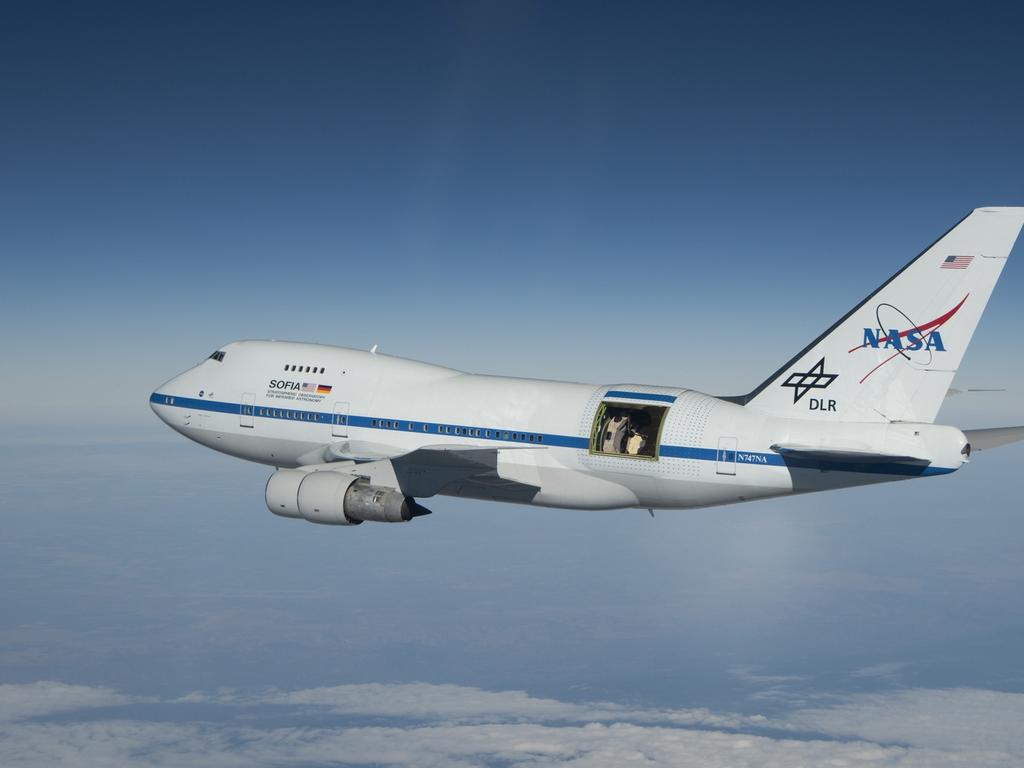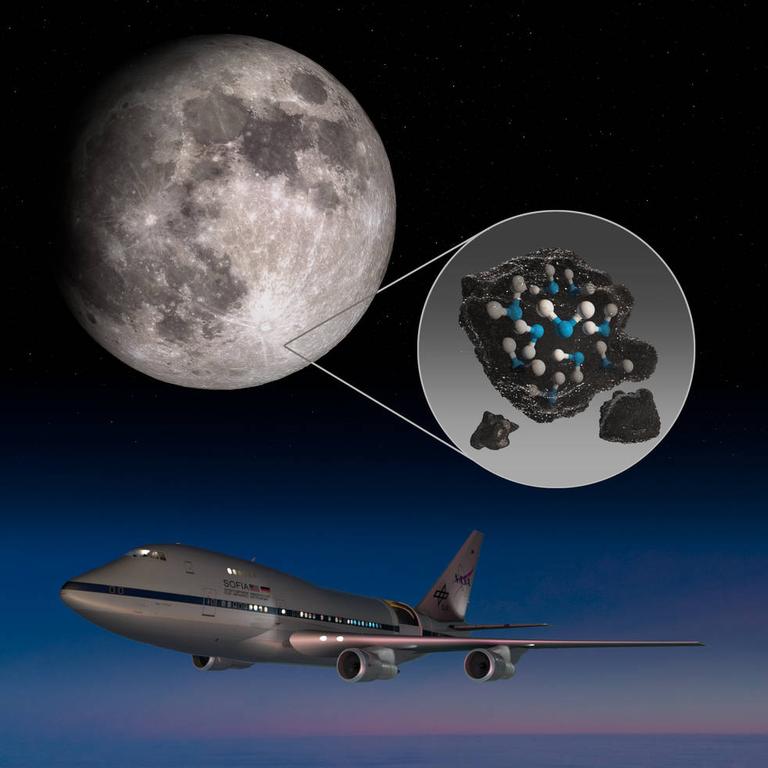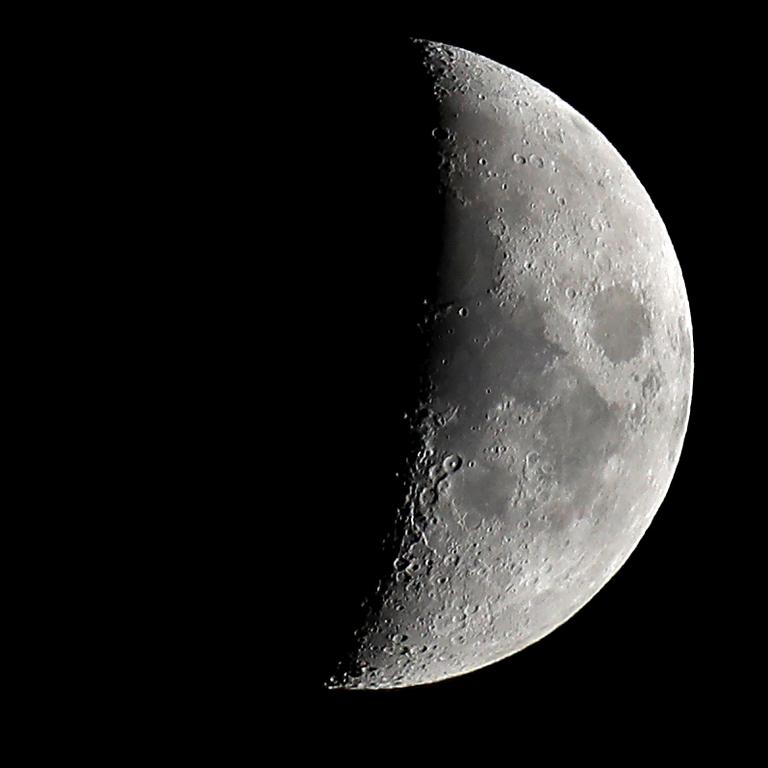NASA: Water and ice discovered on the moon’s Clavius Crater ahead of Artemis program return
A sophisticated NASA telescope has confirmed there’s water on the moon – and there could be a lot more on the lunar surface than originally thought.
NASA has confirmed water on the sunlit surface of the moon.
There’s not a huge amount and it’s not exactly sitting around in puddles or lakes, but a director at the US space agency said the confirmation “challenges our understanding of the lunar surface and raises intriguing questions about resources relevant for deep space exploration”.
All up NASA has so far confirmed a small amount of water but the moon is still around 100 times drier than the Sahara Desert.
The discovery was made using NASA’s Stratospheric Observatory for Infrared Astronomy (SOFIA), a modified, telescope-carrying Boeing 747 that flies high up in the Earth’s atmosphere, and is so sensitive it can pick up water’s “specific wavelength” at 6.1 microns.
RELATED: Historic NASA touchdown on asteroid
RELATED: Mars the closest it will be until 2035

SOFIA detected water molecules in the Clavius Crater in the moon’s southern hemisphere.
The crater is so big that it can be seen from Earth, and inside it there’s a tiny amount of real water – around a soft drink can’s worth.
NASA had previously detected hydrogen on the moon’s surface but was unsure whether it was actually water or a chemical relative known as hydroxyl (similar to alcohol).
The water on the moon is concentrated at around 100 to 412 parts per million and is trapped in a cubic metre of soil spread across the lunar surface according to NASA.

RELATED: Space agency recruiting ‘alien hunters’
RELATED: Virus delays search for new planet
NASA’s director of astrophysics at the Science Mission Directorate Paul Hertz said the discovery raises “intriguing questions”.
“We had indications that H2O – the familiar water we know – might be present on the sunlit side of the moon. Now we know it is there. This discovery challenges our understanding of the lunar surface and raises intriguing questions about resources relevant for deep space exploration,” Dr Hertz said.
One of those “intriguing questions” is the source of the water: Where it’s coming from and how it’s staying there.
“Without a thick atmosphere, water on the sunlit lunar surface should just be lost to space,” postdoctoral fellow at NASA’s Goddard Space Flight Centre Casey Honniball said.
“Yet somehow we’re seeing it. Something is generating the water and something must be trapping it there.”
Some of the space agency’s initial theories include “micrometeorites” depositing water on the surface of the moon when they land.
Another theory is hydrogen from the sun’s solar wind could be reacting with oxygen in the soil to create hydroxyl, which radiation from micrometeorites then turns into water.

It’s thought that water could then be trapped inside the soil, or hidden between grains of soil that shelter it from sunlight and evaporation. (NASA would prefer the latter hypothesis as it would make the water “a bit more accessible than water trapped in beadlike structures” in the soil.)
Dr Honniball’s graduate thesis from the University of Hawaii led to the paper detailing the discovery published in Nature Astronomy, of which she’s the lead author.
NASA now wants to determine if the water SOFIA has discovered will be able to be used as a resource as it seeks to return people to the moon for the first time in more than 40 years.
By the end of 2024, NASA wants to land another man and the first woman on the moon, as well as establish a “sustainable human presence” there by the end of the decade.

The recently confirmed water is only a small amount, but there could be more of it around.
Another NASA paper published in Nature Astronomy looks at the small shadows of the moon where the temperature is below freezing, which could also contain more water that could be useful for future expeditions.
“If we can use the resources at the moon, then we can carry less water and more equipment to help enable new scientific discoveries,” chief exploration scientist for NASA’s Human Exploration and Operations Mission Directorate Jacob Bleacher said.
SOFIA will continue looking for water on the moon, and the odds look good, particularly given the data used to confirm water in the Clavius Crater came from the first ever observations the project made of the moon as a test.
SOFIA usually looks at distant, dim objects such as black holes, star clusters and galaxies.
When it turned its attention to the moon, the much closer, much brighter object took up the entirety of SOFIA’s camera view.
“We weren’t even completely sure if we would get reliable data, but questions about the moon’s water compelled us to try,” SOFIA project scientist at NASA’s Ames Research Centre in Silicon Valley Naseem Rangwala said.
“It’s incredible that this discovery came out of what was essentially a test, and now that we know we can do this, we’re planning more flights to do more observations.”



